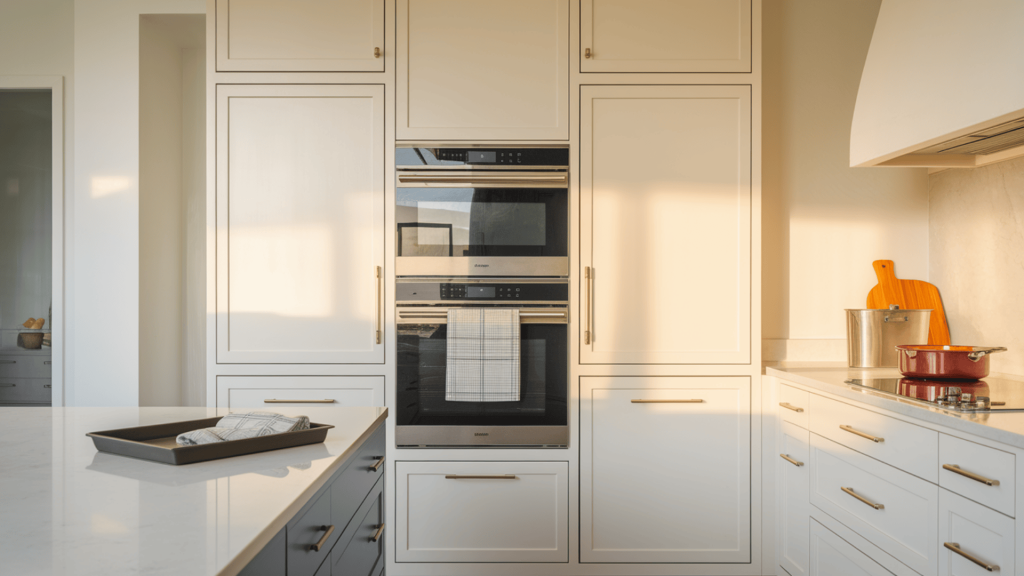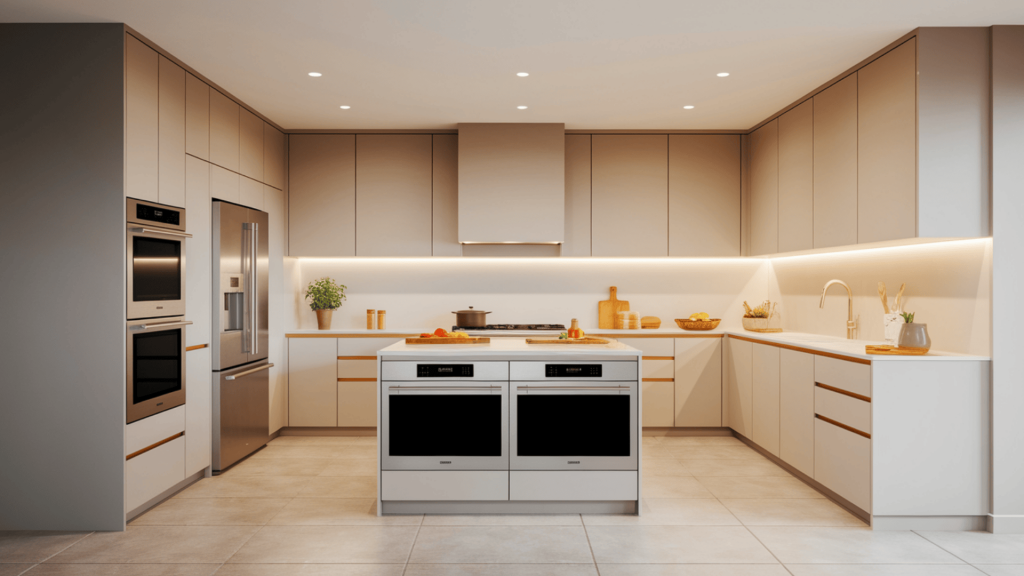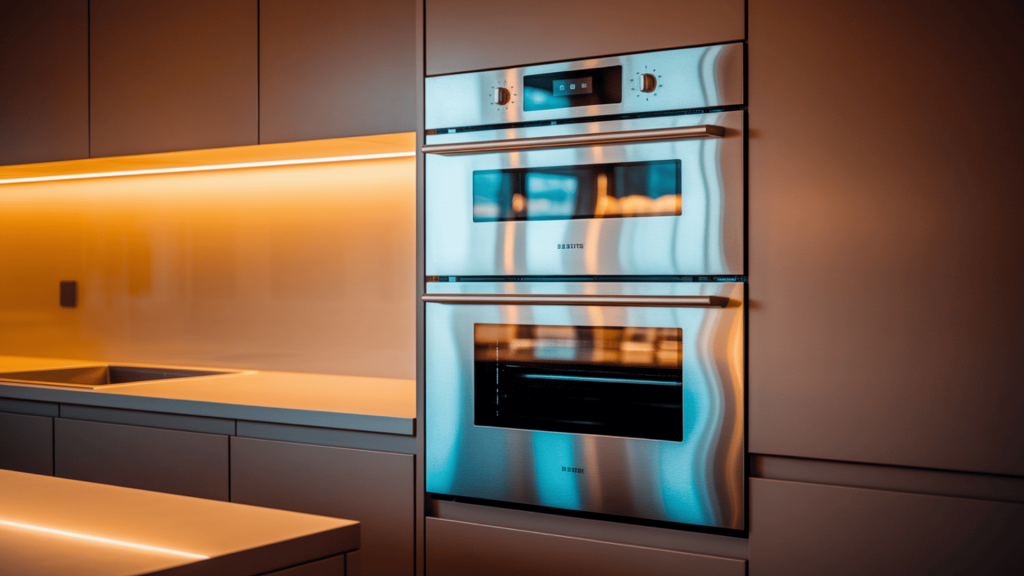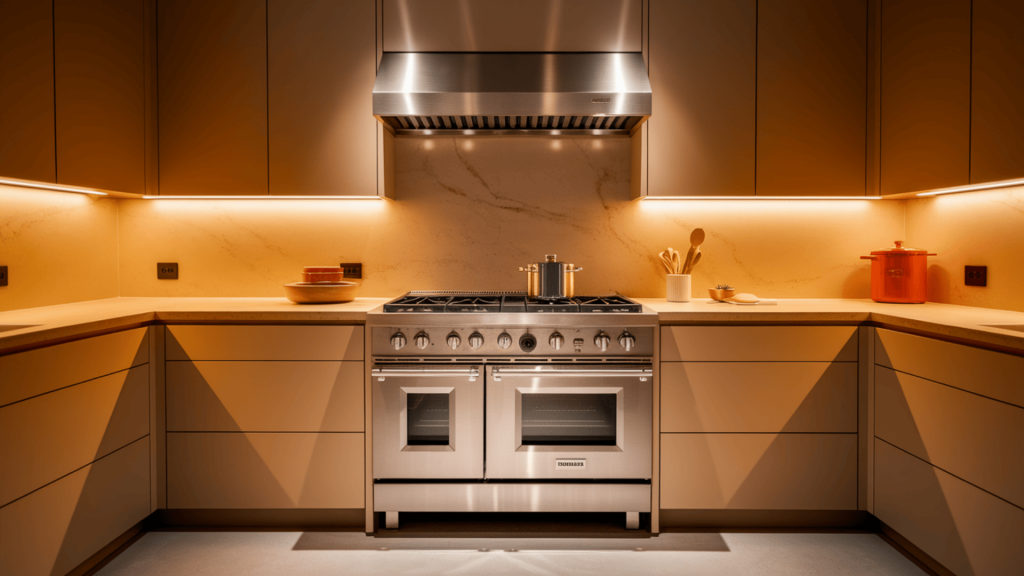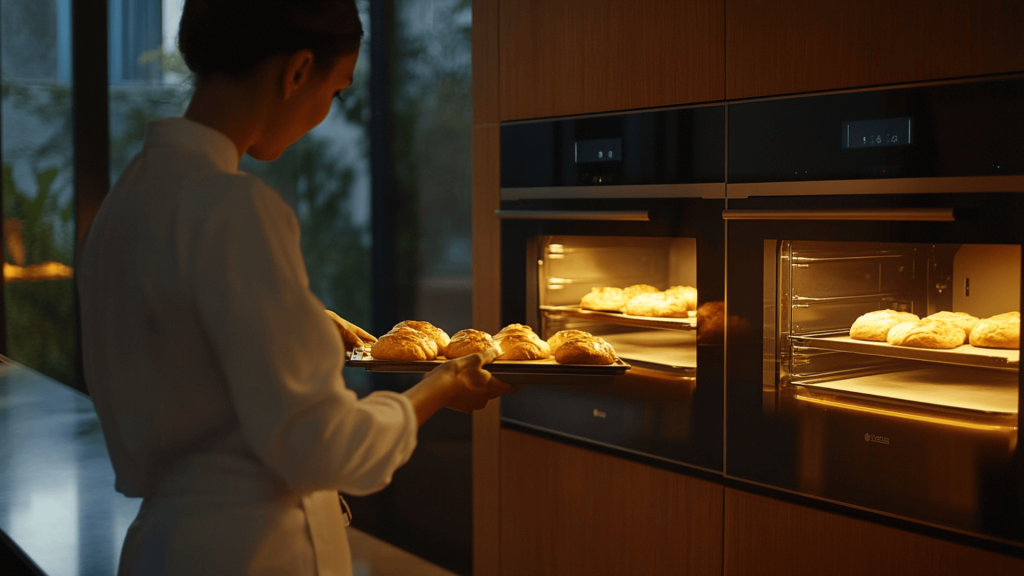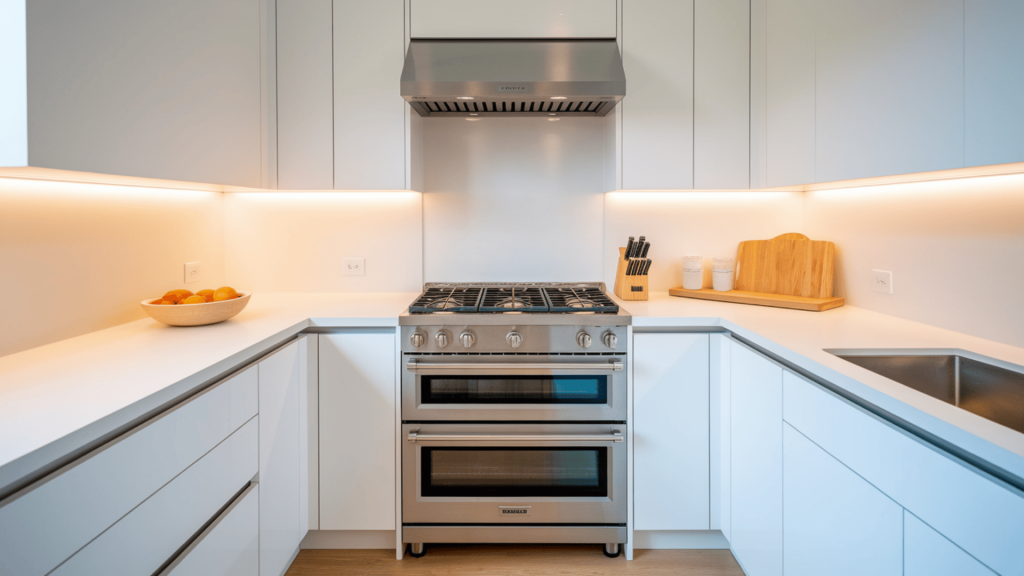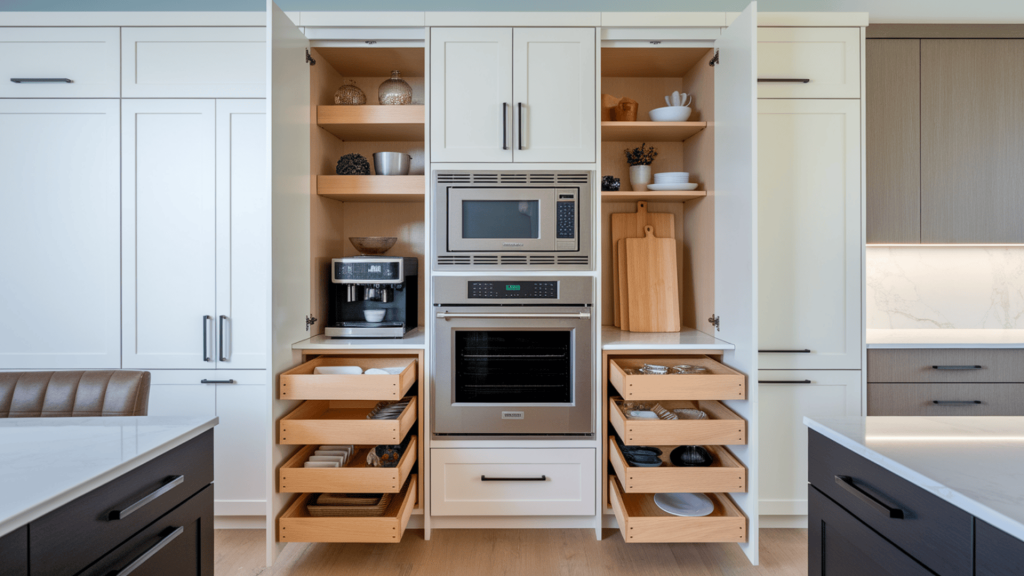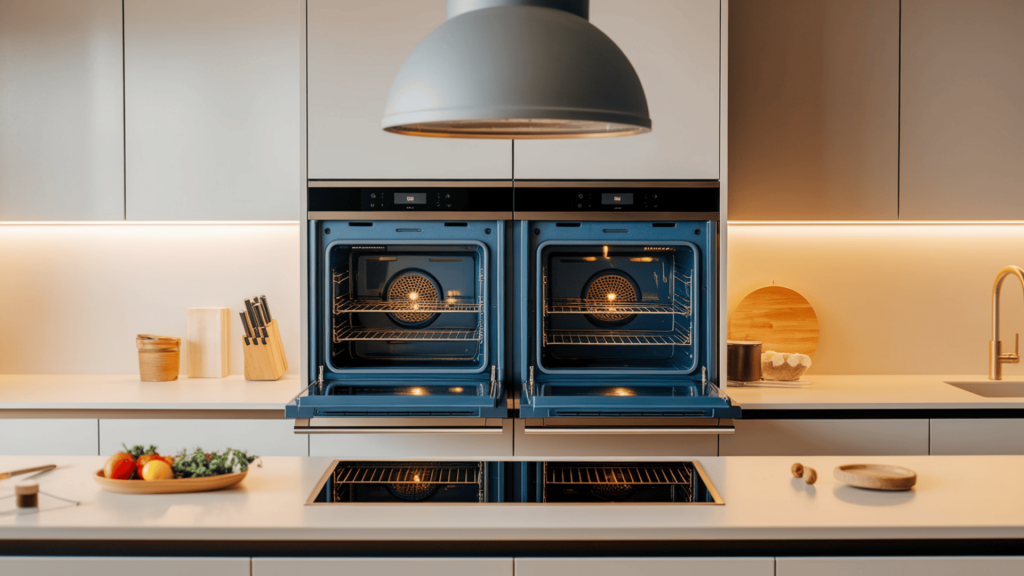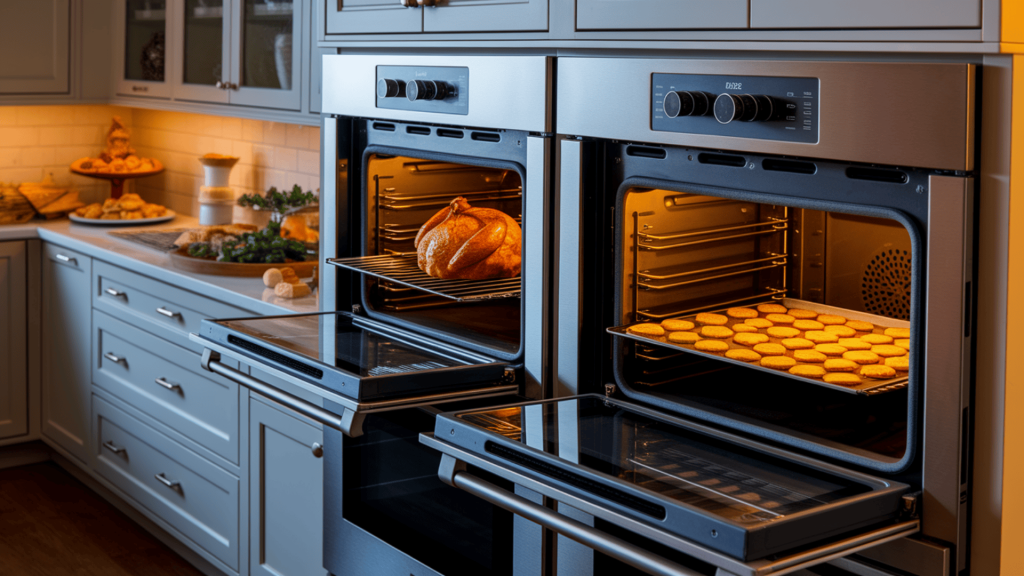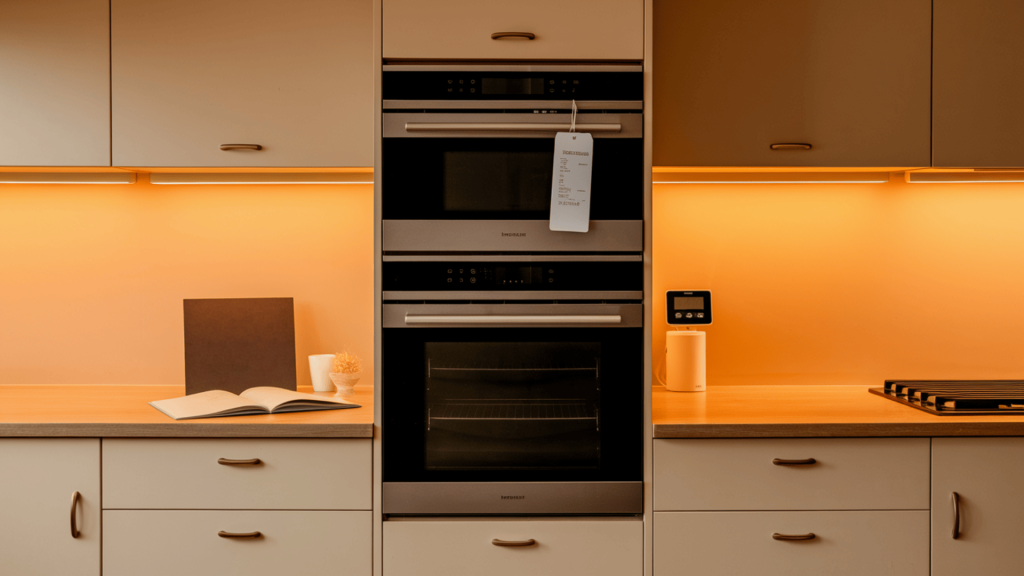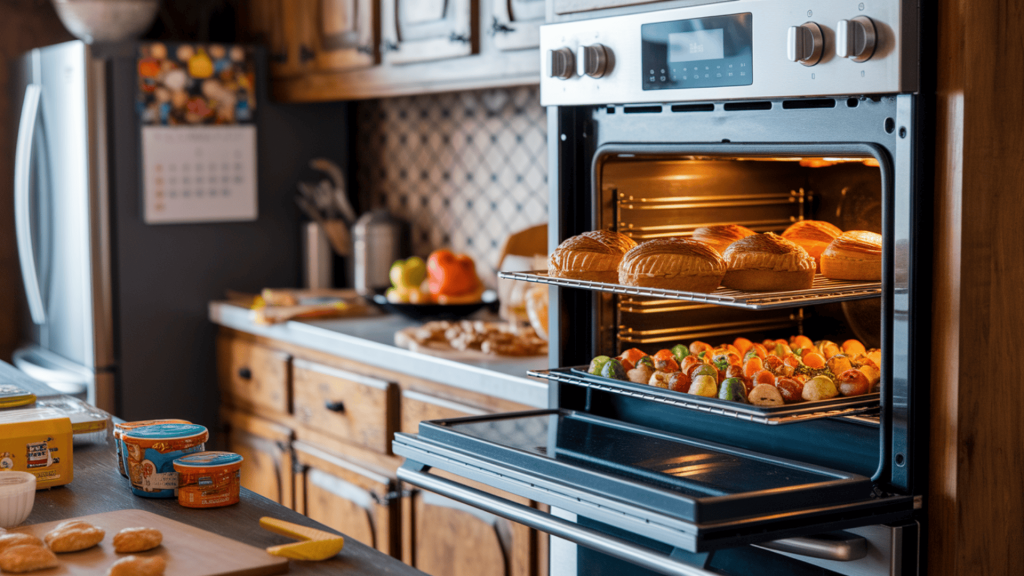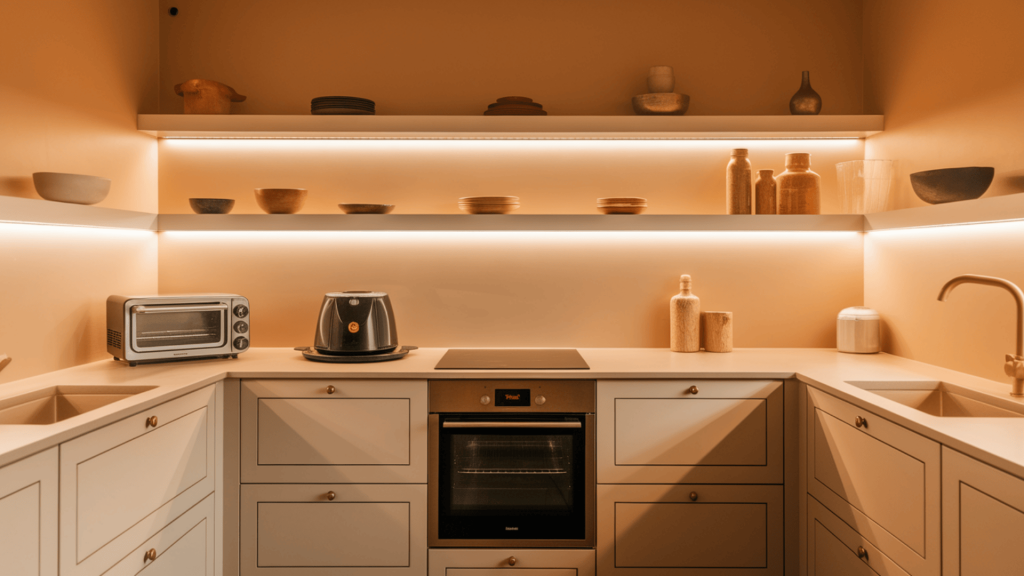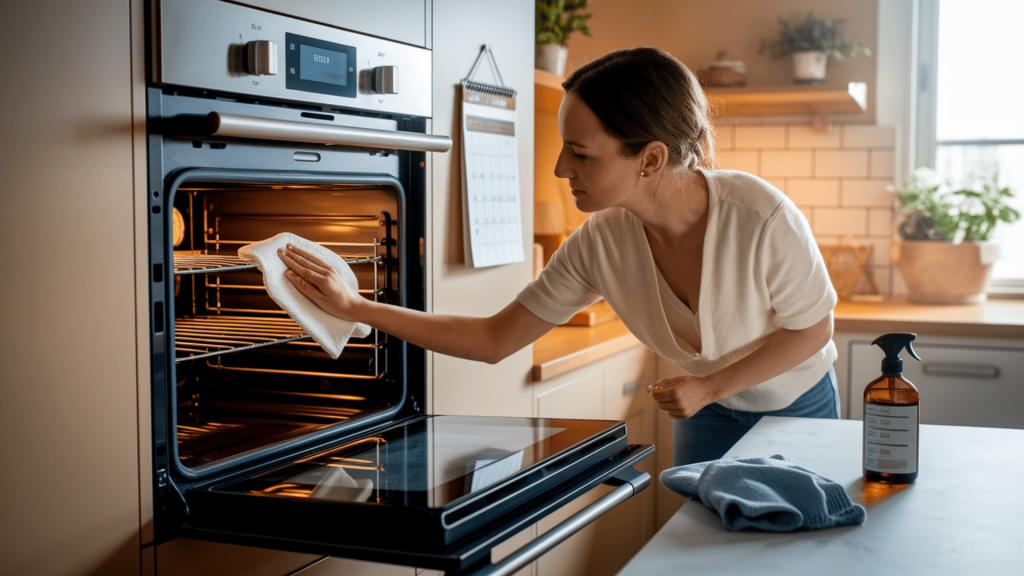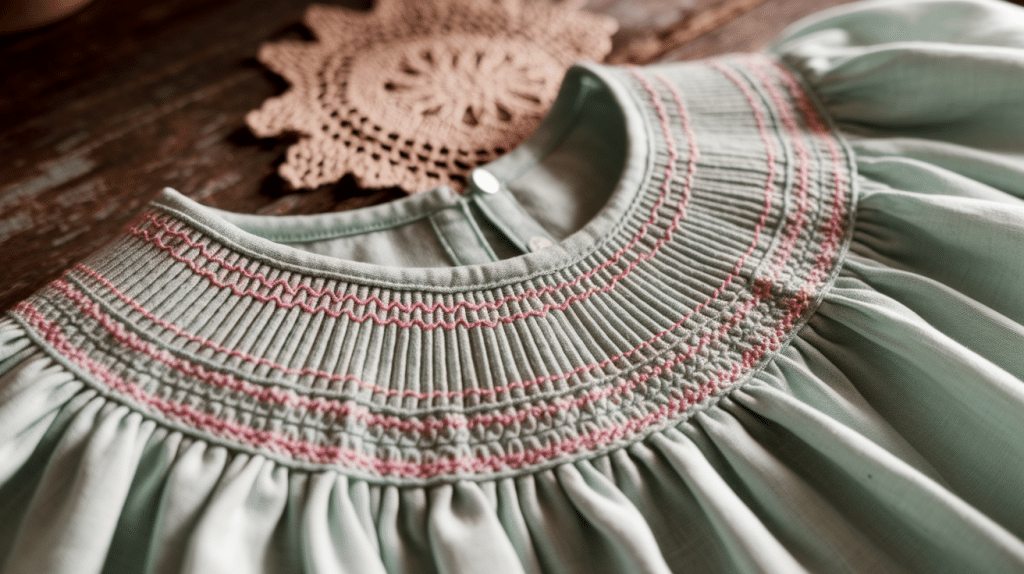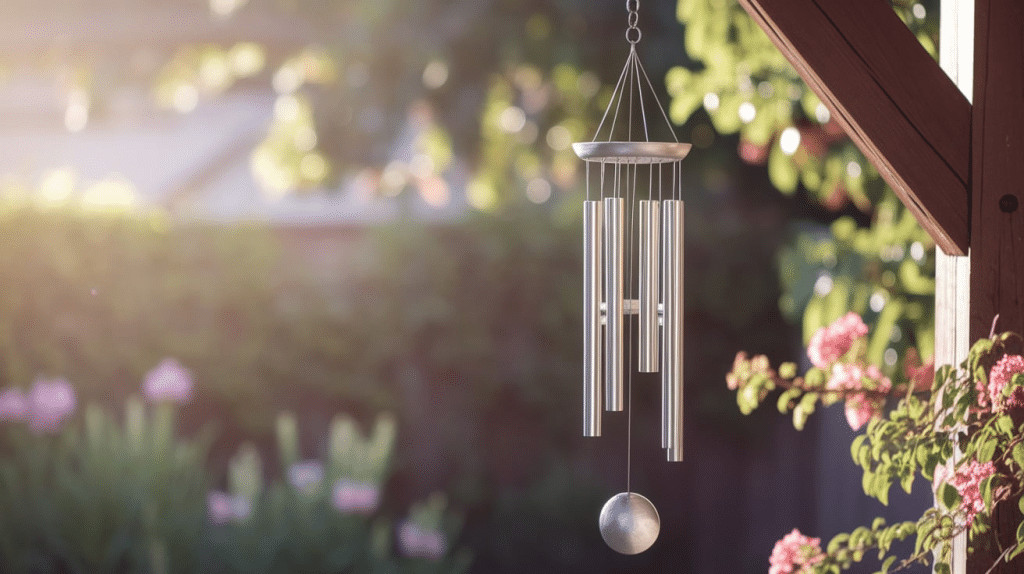Planning a kitchen that puts cooking first?
A double wall oven might be the game-changer your space needs.
Home chefs know that timing is everything, and having two ovens working at different temperatures can turn cooking into a smooth symphony instead of a stressful juggling act.
The right placement turns these workhorses into both functional powerhouses and stunning focal points.
Your layout options, from tucking them into wall cavities to making them stand proud in kitchen islands, can change how you cook daily meals and host gatherings.
Ready to stop wrestling with single-oven limitations?
Let’s look at smart layouts that maximize your cooking potential while creating a kitchen that looks as good as the food you’ll make in it.
Best Kitchen Layout Ideas for Double Wall Ovens
Two wall ovens stacked together offer serious home cooks a major boost in cooking space and timing control.
When you host holiday meals or weekend gatherings, this setup lets you cook multiple dishes at different temperatures simultaneously—no more waiting for one dish to finish before starting another!
Most home chefs place their double ovens in one of three smart spots:
- Central cooking zone wall units keep everything within reach while you work, creating a command center for meal prep.
- Kitchen island placements put your ovens at the heart of your kitchen, making them stand out and giving you 360° access.
- Tall appliance groupings work wonderfully in smaller kitchens by using vertical space, often pairing ovens with other built-ins.
Think about your typical cooking routine—where you spend most of your time, how you move between fridge, sink, and prep spaces, and who might be working alongside you.
The right oven placement turns good meals into great ones without getting in your way.
Where Should You Place a Double Wall Oven in Your Kitchen?
The position of your double wall oven greatly impacts your cooking comfort and kitchen flow.
Smart placement can cut down walking time and make cooking more enjoyable, while poor positioning might leave you frustrated every time you cook.
Most kitchen pros suggest keeping your oven inside the work triangle—that imaginary line connecting your sink, fridge, and cooking zone.
This setup helps you move less when preparing meals, saving time and energy.
Always make sure there’s counter space next to your ovens.
You need a safe spot to put hot dishes without having to walk across the kitchen with burning-hot cookware in your hands.
Common Placement Mistakes to Watch For
Many homeowners put ovens too high, making it hard to check on food or safely remove hot dishes.
The top oven shouldn’t sit higher than eye level for most household cooks.
Tight corner installations can block doors from opening fully or create awkward reaching positions that might cause burns or dropped dishes.
Four Smart Installation Options
Think about which of these placements would work best with your kitchen layout and cooking habits before making your final choice.
- Wall Cavity Installation: Built directly into your wall, this clean look works well in open-concept spaces
- Tall Cabinet Housing: Creates a finished, built-in look while hiding wiring and connections
- Kitchen Island Base: Makes a bold statement and allows friends to watch you cook
- Under-Cabinet Placement: Works well when paired with other built-ins like microwaves
Your choice should balance practical cooking needs with the visual impact you want your ovens to have in your kitchen space.
Choosing the Right Type of Double Oven Setup
The perfect double oven setup matches both your cooking style and kitchen size.
Let’s look at your options: Finding the right configuration can transform how you cook and entertain, making meal preparation more efficient and enjoyable.
1. Wall-Mounted Double Ovens
These units offer easy access at comfortable heights.
Your main oven can sit at waist or chest level, making it simple to check food without bending.
The second oven sits just above or below, saving floor space while giving you twice the cooking capacity.
Most wall-mounted models come with premium features like convection cooking, temperature probes, and self-cleaning functions.
2. Freestanding Ranges with Double Ovens
When kitchen space is tight, a freestanding range with two built-in ovens gives you cooking flexibility without eating up extra wall space.
These units typically feature a smaller top oven (perfect for daily use) and a larger bottom oven for big meals.
The all-in-one design also means fewer installation headaches and potentially lower costs compared to separate wall units.
3. Side-By-Side Oven Installations
For wide kitchen walls, side-by-side ovens create a striking look.
This setup puts both ovens at the same height, making them equally easy to use.
Many professional kitchens use this layout because it allows two cooks to work side-by-side without getting in each other’s way.
4. Under-Counter Ovens
These units work perfectly in clean-lined, modern kitchens.
By tucking ovens below counter height, you keep countertops and sight lines open, which helps smaller kitchens feel more spacious.
Many cooks find this placement ideal for baking, as it lets you slide heavy items straight onto countertops without lifting them high.
5. Oven-Range Combinations
This space-saving option gives you stovetop cooking and double oven capacity in one unit.
The main oven sits below your cooktop, while a second, often smaller oven sits above or below the main cavity.
These combo units offer excellent value for smaller homes and rentals where major wall modifications aren’t possible.
How to Maximize Style and Storage Around a Double Wall Oven
Your double oven can become a stunning focal point with thoughtful design choices around it.
The look of nearby cabinets plays a huge role in how your ovens fit into your kitchen’s overall style.
Some homeowners choose matching panel kits that make ovens blend with cabinetry, while others highlight their ovens with contrasting cabinet colors.
Smart Storage Solutions
The space around your ovens offers perfect storage opportunities for cooking tools you use often:
- Pull-out shelves next to ovens keep hot pads and baking sheets handy
- Narrow vertical cabinets work well for storing cutting boards and baking trays
- Drawers below ovens make perfect homes for cooking utensils and small bakeware
For the most put-together look, think about how other appliances might stack with your ovens.
Many kitchens pair double ovens with microwaves, coffee stations, or warming drawers in a single tall cabinet for a custom-built look.
Smart Design Tips for Workflow and Ventilation
The perfect oven setup makes cooking feel natural and smooth.
Consider these practical details that many homeowners miss:
- Position Prep Areas Strategically – Keep food prep counters within a few steps of your ovens to cut down on walking time. Ideally, you should be able to turn from chopping vegetables to putting a dish in the oven with just a single step.
- Plan for Ample Door Clearance – Make sure you have enough room for oven doors to open fully without hitting islands, cabinets, or walkways. Most ovens need at least 20 inches of clearance in front.
- Install Proper Ventilation – While wall ovens don’t strictly require hoods like ranges do, installing a small hood or ventilation fan helps remove excess heat and cooking smells, keeping your kitchen comfortable.
- Create Traffic-Free Zones – Plan your kitchen pathways so that people walking through don’t cross in front of the oven area. This prevents accidents when someone has the oven door open or is carrying hot food.
- Consider Counter Heights – The most comfortable kitchen setup places your main oven at or slightly below elbow height, which makes transferring heavy dishes safer and helps prevent back strain.
Good kitchen flow happens when you think about how you actually cook, not just how things look.
Take time to imagine yourself making your favorite meals and plan your oven placement accordingly.
Is a Double Wall Oven Worth It?
Double-wall ovens bring both benefits and costs.
Here’s what to think about before making this investment: Taking time to weigh these factors against your unique cooking needs and kitchen constraints will help you make the right choice for your home and lifestyle.
1. The Upsides
Double ovens let you cook multiple dishes at different temperatures, making holiday meals and party prep much easier.
Imagine baking cookies while roasting a chicken—no more waiting for one dish to finish before starting another.
These units often boost home value, especially in higher-end markets where buyers look for premium kitchen features.
The setup shines for people who host often. You can keep food warm in one oven while finishing other dishes in the second.
2. The Downsides
Expect to pay more—both upfront and for installation. Double ovens typically cost 30-50% more than single units.
They take up more wall space than single ovens, which might mean giving up cabinet storage.
Running two ovens uses more electricity, though you won’t always use both at once.
3. Who Should Get a Double Oven?
This setup makes sense for large families, people who cook often, and homes where meals happen on a schedule (like when kids need to eat at certain times).
It’s also smart for serious bakers who need exact temperature control for different items.
4. When to Pick Something Else
If you rarely cook big meals, live alone, or are working with very limited space, the extra capacity might not justify the cost and space.
Kitchens with minimal wall space or tight layouts often benefit more from a quality single oven paired with smart cooking accessories that take up less room.
Maintenance and Energy Tips for Long-Term Efficiency
With proper care, your double ovens can work well for 15+ years while using less energy.
- Tackle spills right away, before they burn on and become tough to remove. Even small food bits can cause smoke and smell when they burn.
- Set a monthly cleaning reminder for both ovens. Self-cleaning cycles help, but wiping down door edges and seals by hand keeps them working properly.
- Check the rubber gaskets around oven doors yearly. These seals keep heat in, and when they wear out, your oven works harder and uses more power.
- When shopping, look for ENERGY STAR ratings and smart features like cooking sensors that prevent overcooking. Some newer models connect to home networks, letting you preheat remotely or get alerts when food is done.
Good maintenance habits not only extend the life of your investment but also help ensure your food cooks properly every time.
Final Thoughts
The perfect kitchen layout with a double wall oven balances beauty, function, and your cooking style.
By considering placement, clearance, and workflow, you can create a cooking space that makes daily meals easier and special occasions stress-free.
Your double oven investment pays off in cooking flexibility, time savings, and even added home value.
Pay attention to installation details, regular maintenance, and energy-saving features to get the most from your ovens for years to come.
Most importantly, trust your instincts about how you naturally move and cook—the best kitchen layout is one that feels right to you every time you step up to create a meal for those you care about.
Upgrade your culinary space—where two ovens are better than one, and perfect design is the secret ingredient.
Comment below with your double oven kitchen photos or what you love most about your setup!
Are you thinking of adding one to your kitchen?
Share what’s holding you back, and let’s problem-solve together!

